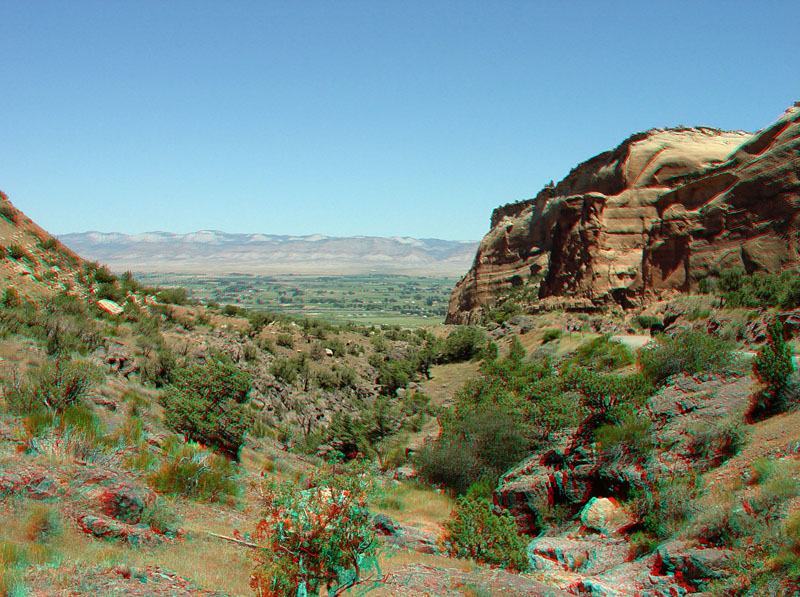| This view is looking north down Fruita Canyon toward the Grand Valley. Rocks in the foreground and along the creek are Precambrian-age crystalline metamorphic and igneous rocks (mostly granite, gneiss, and schist). Radiometric dates suggest that these rocks were metamorphosed about 1.72 billion years ago, and that these metamorphic rocks formed from igneous and sedimentary rocks that were significantly older. These rocks were later intruded by mafic dikes (called Lamprophyre dikes) about 1.4 billion years ago (Scott and others, 2001). The Precambrian-age rocks are unconformably overlain by sedimentary rocks of Late-Triassic age (Chinle Formation and Wingate Sandstone). These sedimentary rocks were deposited roughly 200 to 220 million years ago on an eroded surface on the older Precambrian rocks. The existence of an irregular erosional unconformity between the Precambrian rocks and the Triassic rocks tell part of the story of an ancestral mountain range that formed in the late Paleozoic (about 300 million years ago) that, over time, were wore down and buried by sediments eroded from the uplift and from elsewhere in the region. The ancient mountain range is called the Uncompahgre Uplift. Much later in geologic history, during the Laramide Orogeny (starting about 70 million years ago), these rocks were folded and uplifted. Folding and uplift continued in the region, even to the present day. Today, these ancient rocks and geologic structures are being exhumed by erosion (Scott and others, 2001; Baars, 1998). |

